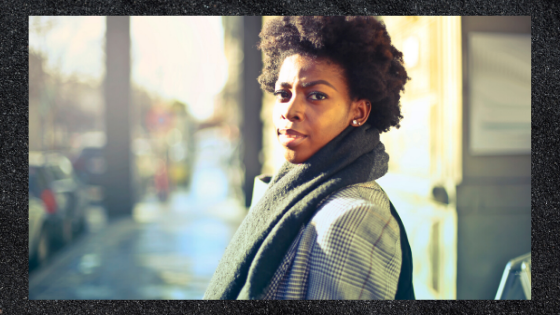
The thing that many people in the diaspora as well as non-immigrant people do not really get is how challenging, terrifying, and traumatizing the cultural assimilation process can be for immigrants
A couple of months ago I had a conversation with a good sister-friend of mine about dating and what qualities I think are important in a partner. My homegirl who is happily married, always gives me great insight on almost everything. She goes on to say that I will most likely end up with an African/Black American or white European partner (I may or may not discuss this “dating theory” in later blogs, depending on how I feel y’all.) This is not the first time I’ve heard this. People have said this several times throughout my 20s. Matter of fact, that was the second time I heard that same comment in that week. I. Kid. You. Not.
As we Facetime, my *screw-face* appears and I ask, “Why do you say that?” Her explanation was that my humor and how I dialogue is of the African American Vernacular English (AAVE) variety, amongst many other things. I’m not going to lie, I was puzzled, but also it really got me thinking about how I and many other African immigrant women, children of African immigrants, and African immigrant people communicate and present in different spaces, that are not African.
The facts are, AAVE and culture as we can see in almost every aspect of American society and globally has influenced pop-culture, fashion, art, music, social and political movements in tremendous ways. A lot of which have been irresponsibly culturally appropriated, but much of it is a reflection of admiration for the contribution to humanity that native Black Americans have made, not to mention inadvertently the impact on immigration policy and rights.
I can go in and out of accents at the drop of a dime and very quickly scan the room to know how I will have to “present” in any given space and audience, completely unapologetically.
When my mother, brother and I came to the US in the 90s, we came with a couple of small bags and our brown bodies. We landed in New York, and all my mother had in her pocket was a half-written address of her older sisters place, who lived in Maryland, with no phone number. We took the Greyhound to Silver Spring, Maryland and eventually located my aunts apartment building. Luckily her and my mom can be mistaken for twins and people at her apartment building recognized the resemblance. This was when my immigrant experience started and code-switching became essential to my survival.
Code-switching refers to the ability for a person or people to alternate between different languages, dialects and vernaculars in conversation. In America the most widely known form of this is definitely AAVE. It took years for my brother and me to get the hang of American English and culture, but we were young enough to master it and become fluent. At school teachers thought we were unusually quiet and had speech impediments, not realizing that there were levels of extreme trauma associated with our emigration to the U.S.
The thing that many people in the diaspora as well as non-immigrant people do not really get is how challenging, terrifying, and traumatizing the cultural assimilation process can be for immigrants. The uniqueness in the American immigrant experience lies within the plethora of peoples, nationalities, cultures, ethnicities and religions from all different areas of the world, that settle in the States. Being able to toggle between cultures becomes an art form of sorts, so to speak because if you are unable to effectively communicate or blend in with the dominate or native culture of a society and community, can possibly cause harm to you and your family. Notwithstanding, impacting your forward mobility. However, because the number one unifying factor of all Diaspora people is our varied and melanated skin-tone, we can not escape the political presence of being black in the world.
As an African kid growing up in America, I was Ugandan at home, African on the playground, and American on and in the streets. At any given time those identities merged with one another and frequently this happens. I can go in and out of accents at the drop of a dime and very quickly scan the room to know how I will have to “present” in any given space and audience, completely unapologetically. Personally, I strive to be as authentically and consistently myself, in both the private and the public areas of my life, but more importantly I am very much all of these identities as well.
Without a doubt, when I am with my African and Caribbean friends, there are similar and at the same time different cultural nuances and cues that are used in how we interact and engage one another. What my good sister-friend witnessed was another form of how I use code-switching in my everyday interactions. Admittedly, in the conversation she recognized that she had not been around me in other African Diasporic spaces enough to see how ya girl moves, but this just shows the differing, complex and the multitudes of the African and Black Diasporic experience.
